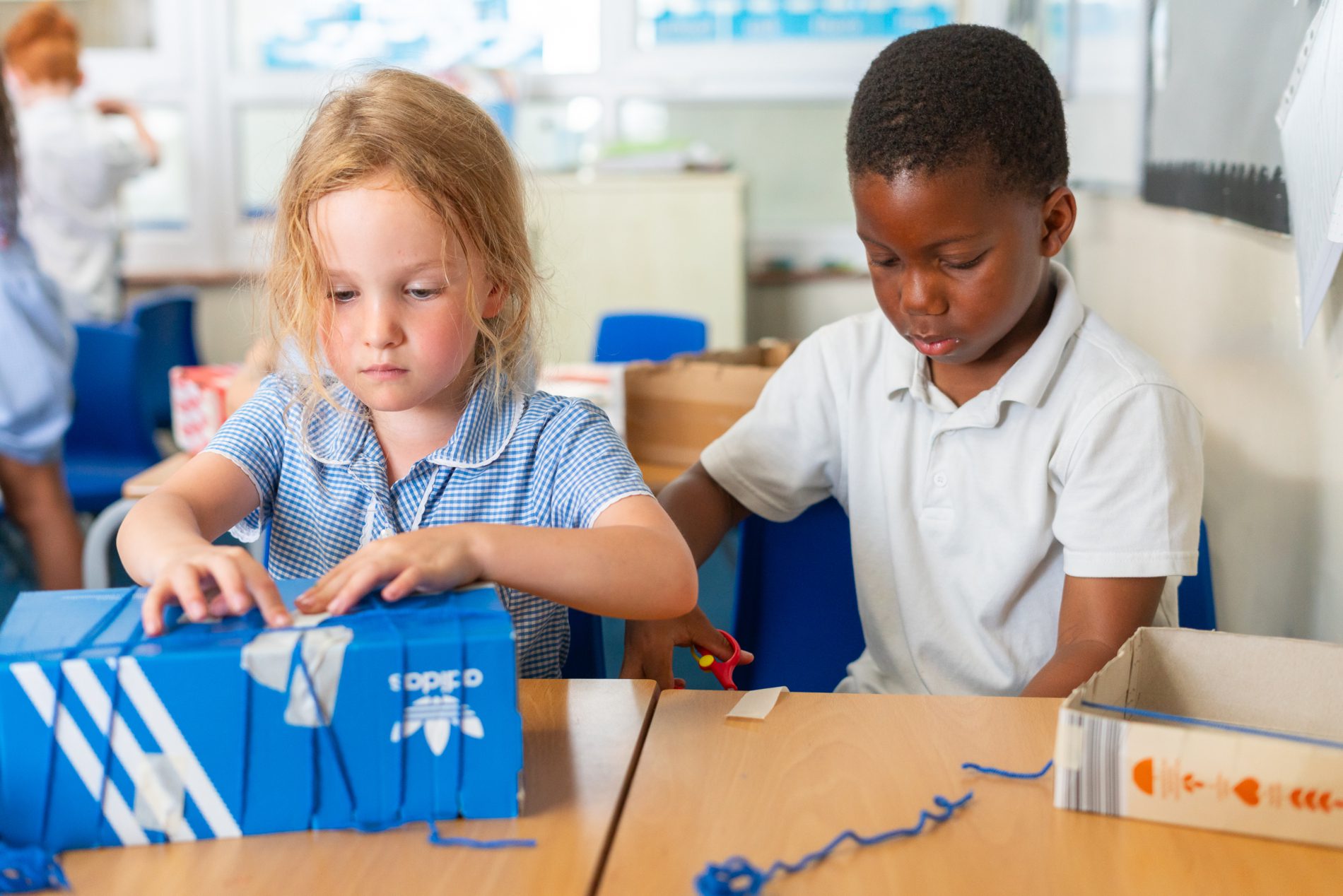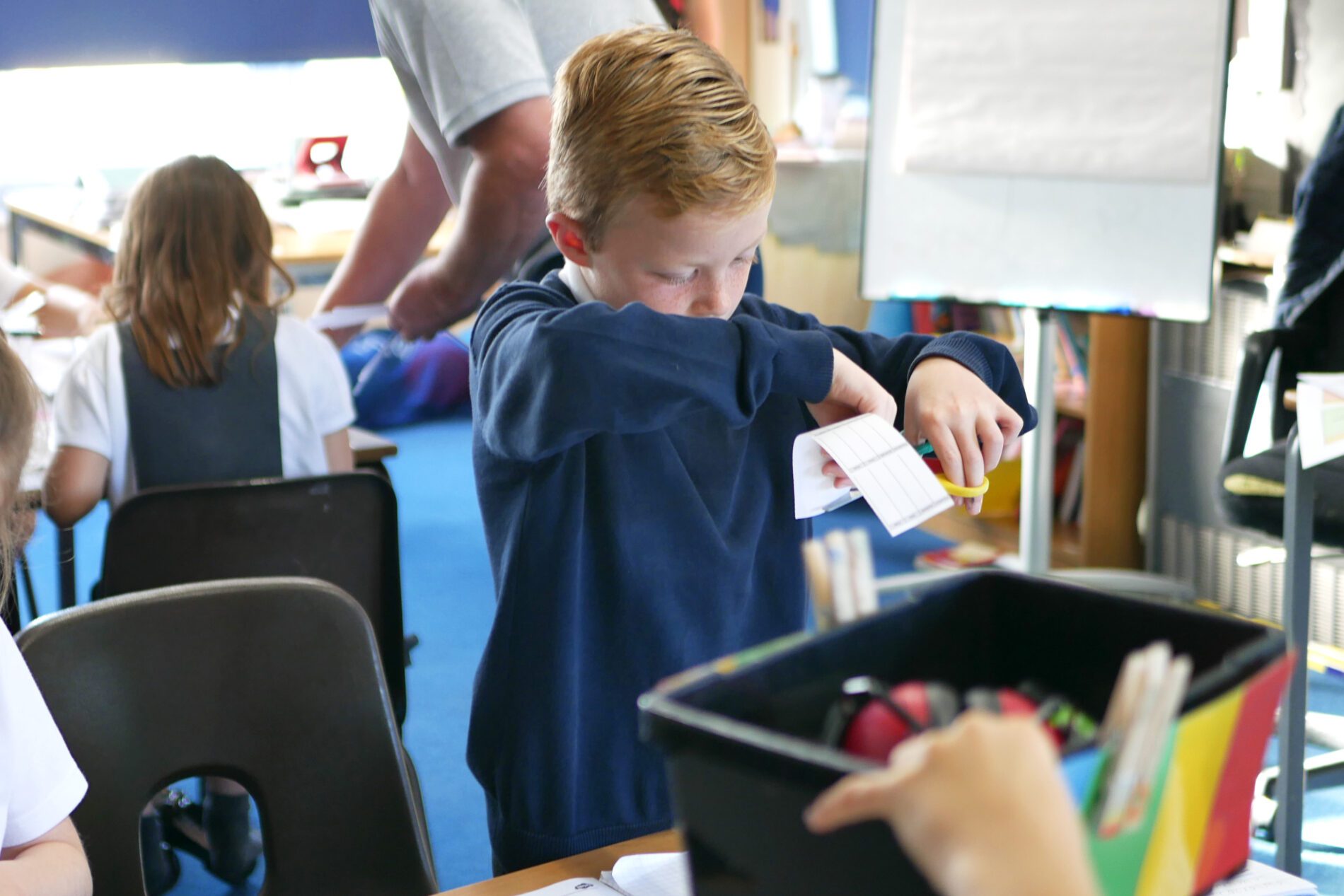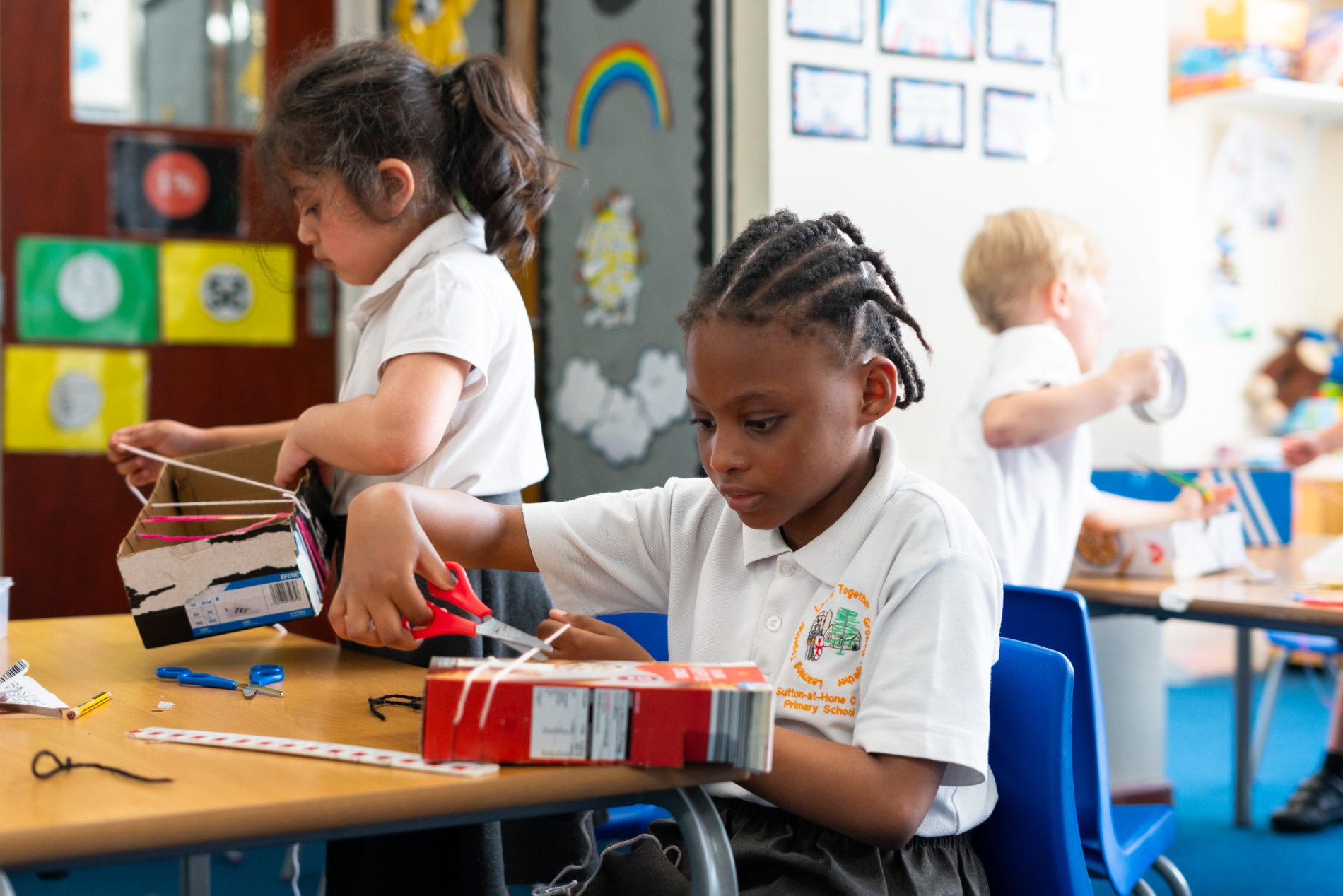Design and Technology Subject Leader: Miss L Thompson
Design and Technology at Sutton-at-Hone is an inspiring, practical subject for all of our pupils. Using creativity and imagination, pupils design, make and evaluate products that often solve problems whilst and bringing together many other subject areas, such as: art, computing, maths and science.
Intent
At Sutton-at-Hone School we hope to inspire pupils to be innovative and creative thinkers who have an appreciation of ideation, creation, and evaluation through our Design & Technology curriculum. We want pupils to develop the confidence to take risks, through drafting design concepts, modelling, and testing and to be reflective learners who evaluate their work and the work of others.


Implementation
The Design and technology National curriculum outlines the three main stages of the design process: design, make and evaluate. Each stage of the design process is underpinned by technical knowledge which encompasses the contextual, historical, and technical understanding required for each strand.
At Sutton-at-Hone we produce a minimum of three design and technology projects per year, in order to allow children to develop and revisit skills needed. We want children to develop an understanding of the needs of others when designing, and be able to incorporate knowledge of materials and processes when making. The evaluation process enables children to make their designs the best that they can be.
Impact
We hope that pupils will leave school equipped with a range of skills to enable them to succeed in their secondary education and be innovative and resourceful members of society.
Following our Design and Technology enables children to develop their understanding of the functional and aesthetic properties of a range of materials and resources. They will also learn to build and apply a repertoire of skills, knowledge and understanding to produce high quality, innovative products, including models, prototypes, CAD, and products to fulfil different needs and scenarios.

Design and Technology in Each Stage
Through a variety of creative and practical activities, pupils will be taught the knowledge, understanding and skills needed to engage in an iterative process of designing and making. They should work in a range of relevant contexts, such as the home and school, gardens and playgrounds, the local community, industry and the wider environment.
When designing and making, pupils should be taught to:
Design
- design purposeful, functional, appealing products for themselves and other users based on design criteria.
- generate develop, model and communicate their ideas through talking, drawing, templates, mock-ups and, where appropriate, information and communication technology.
Make
- select from and use a range of tools and equipment to perform practical tasks such as cutting, shaping, joining and finishing.
- select from and use a wide range of materials and components, including construction materials, textiles and ingredients, according to their characteristics.
Evaluate
- explore and evaluate a range of existing products.
- evaluate their ideas and products against design criteria.
Technical knowledge
- build structures, exploring how they can be made stronger, stiffer and more stable.
- explore and use mechanisms, such as levers, sliders, wheels and axles, in their products.
Cooking and nutrition
- use the basic principles of a healthy and varied diet to prepare dishes.
- understand where food comes from.
Through a variety of creative and practical activities, pupils should be taught the knowledge, understanding and skills needed to engage in an iterative process of designing and making. They should work in a range of relevant contexts, such as the home, school, leisure, culture, enterprise, industry and the wider environment.
When designing and making, pupils should be taught to:
Design
- use research and develop design criteria to inform the design of innovative, functional, appealing products that are fit for purpose, aimed at particular individuals or groups.
- generate, develop, model and communicate their ideas through discussion, annotated sketches, cross-sectional and exploded diagrams, prototypes, pattern pieces and computer-aided design.
Make
- select from and use a wider range of tools and equipment to perform practical tasks, such as cutting, shaping, joining and finishing, accurately.
- select from and use a wider range of materials and components, including construction materials, textiles and ingredients, according to their functional properties and aesthetic qualities.
Evaluate
- investigate and analyse a range of existing products.
- evaluate their ideas and products against their own design criteria and consider the views of others to improve their work.
- understand how key events and individuals in design and technology have helped shape the world
Technical knowledge
- apply their understanding of how to strengthen, stiffen and reinforce more complex structures.
- understand and use mechanical systems in their products, such as gears, pulleys, cams, levers and linkages.
- understand and use electrical systems in their products, such as series circuits incorporating switches, bulbs, buzzers and motors.
- apply their understanding of computing to programme, monitor and control their products.
Cooking and nutrition
- understand and apply the principles of a healthy and varied diet.
- prepare and cook a variety of predominantly savoury dishes using a range of cooking techniques.
- understand seasonality and know where and how a variety of ingredients are grown, reared, caught and processed.
Design and Technology Progression
SEND Information
Our SEND and disadvantaged pupils are given the necessary support in class to fully access the supported DT curriculum. Learning is adapted where necessary to support SEND/EAL pupils to give equal opportunities for all to be confident in approaching any problems faced. Interventions, support and challenges are constantly revised and adapted to ensure all children are supported in achieving learning. The above areas are robustly and continuously monitored to ensure any gaps in learning are addressed.
Design and Technology Extra Resources
This is a fantastic subject to get all the family involved with at home. When your child(ren) receives their homework tasks, why not try collaborating on the practical ones and build a model or create a moving picture, for example.

